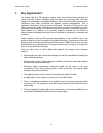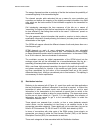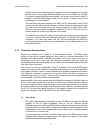DIGITAL RADIO GUIDE WHY DIGITAL RADIO?
10
3 Why Digital Radio?
The existing AM and FM analogue systems suffer from inherent short-comings and
neither can offer uniform reception quality throughout the coverage area. AM radio
reception is constrained by bandwidth limitations, which restrict the audio quality and by
interference from other co-channel and adjacent channel transmissions. This is
particularly troublesome during the hours of darkness. The start of FM services in the
1950’s improved the audio bandwidth and overcame the night-time interference, but the
broadcasts were designed to be received using fixed receivers with external antennas.
When listened to in vehicles or on portables, reception suffered from the effects of
reflected signals (multipath) and other forms of interference, particularly in suburban and
city areas.
Another aspect of AM and FM analogue transmissions is the inefficient use of the
spectrum (relative to what is possible using digital technology). As pressure on the radio
spectrum rises, this finite resource becomes more scarce. Digital radio is seen by some
administrations as a potential source of income and spectrum, as a way to encourage the
resource to be used more efficiently.
There are many ways in which digital radio systems can improve upon analogue
systems:
• Digital signals are more robust than analogue and can be transmitted successfully at
lower transmitter powers.
• Digital systems using coded multicarrier modulation offer much improved reception
on mobile car radios and portables.
• Advanced digital compression techniques enable low bit rates to be used
successfully, whilst still producing sound of near CD quality. This makes digital
systems more spectrum efficient.
• The digital bit-stream can be used for transmitting both audio and data.
• A digital radio is much easier to use/tune than is an AM/FM radio.
• There is increasing competition for the public’s time from the non-broadcast media
such as the CD. By comparison, many AM (in particular) and FM services offer poor
audio quality.
• The data capability of digital radio can be used directly or, with some modification, for
other related broadcasting activities such as Internet radio.


















